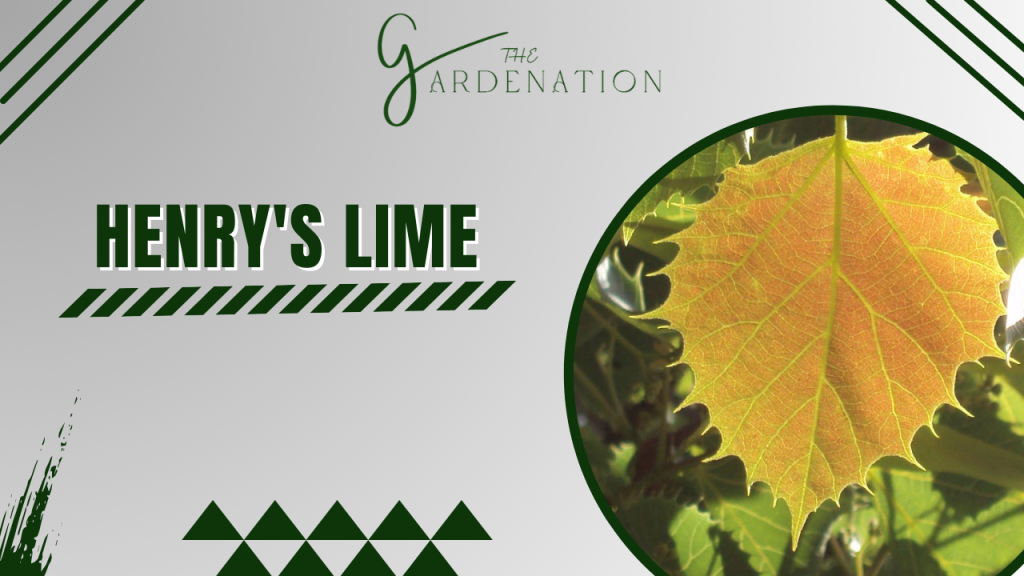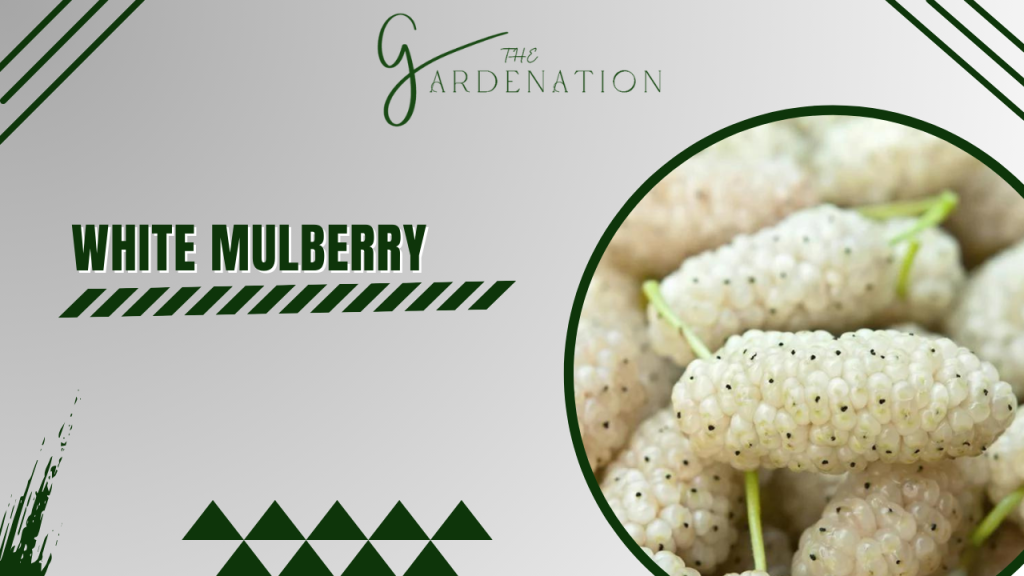17 Identification Trees With Large Heart Shaped Leaves
Trees coat landscapes in green but a closer look reveals diverse forms beyond the familiar silhouettes. Identification Trees with Large Heart Shaped Leaves offer just one lens highlighting nature’s imagination through the branching canopy.
Join me to explore beloved trees boasting charming cordate foliage sure to delight.
Heart Shaped Leaves
Leaves earn their heart-shaped moniker featuring lobes and points reminiscent of symbolic love. More properly called cordate, heart leaves attach to stems tapering into that quintessential indented base.
Botanically they classify by the depth of that central notch distinguishing variations like auriculate leaves with shallow indentations from deeply lobed oak leaf lookalikes.
Trees bear simple cordate greens while some shrubs flaunt fancy foliage taking heart motifs to the extreme!
For more information more about gardening you can visit: 4 Tradescantia Types, 9 Varieties And Care
Trees with Heart-Shaped Leaves
I want to prepare you for a mini world-tour of global favorite heart shaped leaf plant from North America to Asia:
1. American Linden / Basswood

A mainstay of parks and campuses across its native range thanks to easily worked wood, fragrant flowers and amenable shade. Identify it by heart-oval leaves with saw-toothed edges.
- Scientific name: Tilia americana
- Mature Height: 60-100 feet
- Hardiness: 3-8
- Origin: Eastern North America
The American linden is a common shade tree with heart-shaped leaves that have saw-toothed edges. It grows very tall and lives a long time. People like to plant it in parks because it smells nice when it blooms.
2. Balsam Poplar

The nicely pyramidal balsam poplar remains dioecious carrying either male or female flowers on separate clone trees both needed for seed production. It’s fine-toothed heart shaped leaf shimmer below soft green catkins wisely planted outside seed shadow.
- Scientific name: Populus balsamifera
- Mature Height: 50-100 feet
- Hardiness: 1-5
- Origin: Northern North America
The balsam poplar is a tall, pyramid-shaped tree that likes cold climates. I separate male and female trees are needed to produce fluffy catkin flowers and cottony seeds. The leaves have a nice sweet scent when young. Also checkout!! some of the Best Shade Trees For your house.
3. Eastern Redbud

Charming the early spring garden, small shade darling eastern redbud awakens forest understories in vivid fuchsia blooms before heart-shaped leaves emerge. I provide it organically enriched, well drained soil and bright dappled light to thrive.
- Scientific name: Cercis canadensis
- Mature Height: 20-30 feet
- Hardiness: 4-9
- Origin: Eastern North America
In early spring the eastern redbud explodes with bright pink flowers all along its branches before the leaves emerge. It stays small enough to plant in your yard under taller trees. Hummingbirds love the nectar from its pea-like blooms.
4. European Linden

Similar to American linden but with larger nearly tropical-looking leaves. A popular and statuesque urban tree tolerating compacted soil and can handle pollution while its sweet floral scent fills the air on summer nights.
- Scientific name: Tilia × europaea
- Mature Height: 50-70 feet
- Hardiness: 3-7
- Origin: Europe
5. Foxglove Tree

Despite misleading common names, these fast growing trees with heart shaped leaves actually hail from China, not Europe, carrying dark green, felty heart leaves with an impressive golden fall color. Some varieties reduce unwanted reseeding tendencies.
- Scientific name: Paulownia tomentosa
- Mature Height: 40-60 feet
- Hardiness: 5-9
- Origin: China
The foxglove tree grows fast into a medium-sized ornamental with big heart-shaped leaves that turn pretty golden colors in fall. It is named after its flowers that look like foxgloves even though it actually comes from China.
6. Dove Tree

Uniquely recognizable by white bracts resembling flitting doves that dramatically cloak this small ornamental spring flowering tree. Heart-shaped leaf emerges shortly after. Successfully cultivated despite endangered status in the wild.
- Scientific name: Davidia involucrata
- Mature Height: 20-40 feet
- Hardiness: 5-8
- Origin: China
In spring the dove tree gets covered in white bracts that look just like little flying doves giving it its name. It stays small enough for gardens and the heart-shaped leaves come out after the flowers fade.
7. Henry’s Lime

This slow-growing small leaf linden from China enchants all year – from fringed heart-shaped leaf that feel softly hairy if rubbed the wrong way to dangling cymes of light, nectar-rich flowers attracting pollinators. I give it rich soil, bright light and ample moisture.
- Scientific name: Tilia henryana
- Mature Height: 40-60 feet
- Hardiness: 5-8
- Origin: China
Henry’s lime is a slow growing Chinese linden with soft fuzzy feeling heart leaves that smell sweet when crushed. It needs rich soil, ample moisture and likes the dappled light under taller trees. Bright golden fall color is a bonus.
8. Italian Alder

Adapting readily across Europe, this smaller hearty alder tolerates soil extremes from boggy to periodically dry once established. Wavy-margined, pointed heart shaped leaves make nice contrast companions, coloring rich yellow in fall before dropping late.
- Scientific name: Alnus cordata
- Mature Height: 20-100 feet
- Hardiness: 5-7
- Origin: Europe
The Italian alder handles poor soil and seasonal droughts once established. This smaller alder relative has wavy-edged leaves that turn golden yellow in fall before dropping late in the season.
Here are some of the Fastest Growing Palm Trees. Do Checkout!!
9. Quaking Aspen

Arguably the continent’s most widespread native trees with heart shaped leaves, quaking aspen grows in expansive clonal colonies, indeed “quaking” at the slightest breeze. High maintenance and short-lived, the pioneering roots perpetually send up new suckering trunks graphically patched white and green.
- Scientific name: Populus tremuloides
- Mature Height: 50-80 feet
- Hardiness: 1-6
- Origin: North America
The quaking aspen grows in large colonies because its roots keep sending up new trunks. The slim trunks and flattened leaf stems make the heart-shaped leaves “quake” or tremble with even the slightest wind.
10. Japanese Tree Lilac

Reaching 25 feet tall and wide, this large shrub/small trees with heart shaped leaves flower heavily in midsummer. No shaping needed for that reliable performer ,I give ample sunshine and well drained soil. One of the last lilacs to bloom extending the spring spectacle into summer.
- Scientific name: Syringa reticulata
- Mature Height: 20-30 feet
- Hardiness: 3-7
- Origin: Japan, Korea, China
The Japanese tree lilac becomes a small flowering tree that blooms heavily with sweetly fragrant white flowers in midsummer after most other lilacs are done. It is easy to grow needing only ample sunshine and well-drained soil.
11. Katsura

Gorgeous heart-shaped blue-green foliage emerges red-tinged then reliably ignites into golden fall magnificence with colors surprisingly intense for such a large shade tree. On cooler damp mornings, take a whiff – does it smell like cotton candy in the air?
Your katsura needs you to confirm!
- Scientific name: Cercidiphyllum japonicum
- Mature Height: 40-60 feet
- Hardiness: 4-8
- Origin: China, Japan
The gorgeous heart-shaped leaves of the katsura tree emerge red-tinted then turn amazing golden shades in the fall. On damp mornings, its falling leaves smell just like cotton candy filling the cool air with sweetness.
12. Northern Catalpa

Easy to identify flowering in spring then summer by its huge drooping clusters of showy white blooms with yellow and purple eyed spots, just proceed towards that twisty trunk or giant trees with heart shaped leaves nearby.
With such small effort required for such a dimension from this adaptable, tough midwestern native, it makes me think why aren’t more gardens planted with northern catalpa?
- Scientific name: Catalpa speciosa
- Mature Height: 40-70 feet
- Hardiness: 4-8
- Origin: Central United States
The showy northern catalpa sprouts huge clusters of white flowers with yellow and purple spots that attract hummingbirds to its twisty branching shape. Its big heart-shaped leaves flutter in the breeze providing nice dappled shade all summer.
13. Sacred Fig

Revered in Indian religion and culture, the iconic epiphytic sacred fig sinks aerial roots down from its spreading limbs to form writhing trunks and access ground moisture.
The brightly waxy leaf’s elongated tip qualifies it as “fiddle shaped” – an astute observation for such an important ethnobotanical tree.
- Scientific name: Ficus religiosa
- Mature Height: 50-100 feet
- Hardiness: 10-12
- Origin: Asia
In Asian religions, the sacred fig is seen as a magical tree with aerial roots that descend to the ground forming twisted trunks and symbolic meaning. Its waxy “fiddle-shaped” leaves represent important spiritual connections.
14. Silver Linden

A European native likely more drought and heat tolerant than American linden, silver linden’s green leaves flash their brilliant white undersides with every fluttering breeze. A truly tough urban survivor tree considered by many the best all around linden suitable for challenging city spaces.
- Scientific name: Tilia tomentosa
- Mature Height: 50-70 feet
- Hardiness: 3-7
- Origin: Southeastern Europe
A tough and durable linden, the silver linden handles city conditions well while flashing silvery undersides of its heart-shaped leaves with summer breezes. It also provides great shade and a nice symmetrical shape.
15. Southern Catalpa

Preferring consistent moisture, large leafed southern catalpa thrives across old regional planting sites, gracing countless aging small town streets and sprawling untamed beyond abandoned home foundations.
Pluck a leaf, crush slightly and a not unpleasant used cigar aroma emanates, helping explain its other common name – cigar tree.
- Scientific name: Catalpa bignonioides
- Mature Height: 50-70 feet
- Hardiness: 4-9
- Origin: Southeastern United States
The large-leaved southern catalpa thrives naturally near water sending out sprawling root suckers beyond old abandoned foundations. When I crush its big leaves they smell similar to the used cigars that give this adaptable tree its other common name.
16. Weeping Silver Linden

Graceful weeping habit proves these exceptional small ornamental trees with heart shaped leaves are perfect for calm garden respites or Asian style contemplative spaces. Closely related to silver linden, leaves may emerge festooned in fine silver hairs soon fading to green yet no less magical.
- Scientific name: Tilia petiolaris
- Mature Height: 30-40 feet
- Hardiness: 4-8
- Origin: China
Gracefully cascading branches give the weeping silver linden its name. Closely related to the silver linden, its heart-shaped leaves emerge coated in silver hairs before fading to green by summer, creating a lovely focal point.
17. White Mulberry

Brought from Asia for failed silkworm enterprises, abundant white mulberry persists, birds dispersed beyond intentional introduction.
Variable heart shaped leaves shift from mitten lobed on juvenile shoots to ovate triangular with heart bases in maturity. Aggressive where hardy but secondary chemical benefits continue fueling research.
- Scientific name: Morus alba
- Mature Height: 30-50 feet
- Hardiness: 4-8
- Origin: China
Brought long ago in a failed attempt at silk production, white mulberries still grow where dispersed by birds beyond intentional plantings. Their leaves vary in shape from mitten-lobed on new growth to mature heart-shaped leaves.
Frequently Asked Questions About 17 Identification Trees With Large Heart Shaped Leaves
Why do some trees have heart shaped leaves?
The unique indented base of heart-shaped, or cordate, leaves allows efficient water runoff and rain capture focused towards the center vein for improved flow to roots.
This proves useful for tropical trees in stormy climates but also bears adaptive advantages for temperate species potentially exposed to heavy rainfall.
Do heart-shaped leaves turn color in autumn?
Many deciduous trees with cordate leaves develop vibrant fall foliage, especially maples and redbuds widely grown for brilliant autumn displays. Other heart-leaved trees like lindens and aspens also shift through golden tones before shedding leaves. But a few varieties such as sacred fig maintain green foliage year-round in warmer zones.
Which heart-shaped leaf trees grow fast?
Some heart-leaved trees that grow relatively fast include foxglove tree, alder, silver linden, white mulberry and catalpa – under ideal conditions they can gain over 2 feet or more annually when younger. Slower growing heart-leaved trees tend to be smaller ornamentals like Japanese tree lilacs or dove trees with heart shaped leaves that fill out horizontally.
Conclusion
Beyond the standard green foliage, eastern redbud offers burgundy leaved varieties like Forest Pansy, Ruby Falls or Merlot boasting eye-catching red to purple leaves through summer before transitioning to green then golden with autumn’s arrival. Their vibrant colors certainly advanced redbud’s popularity!
We hope this tour of 17 identification trees with heart-shaped leaves stir renewed affection for earth’s arboreal marvels right in our own backyards!


2 Comments